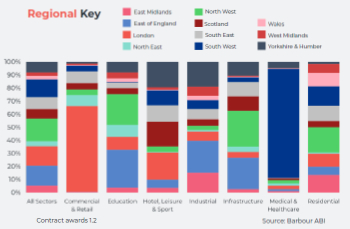Protection of bowling greens
Contents |
[edit] Overview
On 30th August 2011, in reference to the new National Planning Policy Framework, Secretary of State for Communities and Local Government, Eric Pickles said:
“Bowling is one of the nation’s most popular pastimes and the bowling green has long been part of the fabric of our towns and villages. The new powers we are proposing can help to preserve this part of England’s sporting and cultural heritage for years to come.
“I know that bowlers, as well as other community groups, have been frustrated by a sense of powerlessness to stop treasured assets and amenities disappearing. The rights we are putting into law will make sure that local people no longer have to stand by as decisions are made beyond their control. They will be on a much surer footing when it comes getting heard and getting the time and ‘in’ they need to determine what happens in their area.”
During a debate at Westminster Hall on 30 April 2015, MP’s called for “an end to active bowling greens being designated as surplus to requirements by local planning authorities, thereby allowing the redevelopment of the greens — building over them — to go ahead". Following the debate, Nick Boles MP Parliamentary Under Secretary of State (Planning) and Stephen Williams MP Minister for Communities wrote to all Local Authority Leaders reminding them of their powers to save bowling greens. Ref gov.uk 9 June 2014.
[edit] Community Right to Bid
The Community Right to Bid was introduced under the Localism Act 2011, and allowed people to apply to their local authority to have land or buildings listed as Assets of Community Value. Once listed, it is possible for the community to delay sale by six months, giving time to raise money and produce a plan to buy the asset. The Community Right to Bid does not force the owner to sell their asset, it just enables the community to delay the sale and provides time for them to prepare a tender for purchase.
See Community right to bid for more information.
[edit] Planning protection
The planning system has safeguards in place to help protect open spaces, which includes bowling greens and the National Planning Policy Framework states:
“...existing open spaces, sports and recreational buildings should not be built on unless an assessment has been undertaken, which has clearly shown them to be surplus to requirements, or that the loss resulting from the proposed development would be replaced by an equivalent or better provision in terms of quantity and quality in a suitable location”.
The framework also allows for the designation of ‘Local Green Space’ which enables communities to identify green space of particular importance to them for special protection from development. New development is only be permitted within these areas in special circumstances.
[edit] Further information
There is further guidance available on the mycommunityrights website and the ‘Understanding the Community Rights’ document provides additional guidance.
NB The Protection of Bowling Greens (Development Control) Bill 2010-12 was a Bill to require local planning authorities to ensure that certain criteria were met before planning permission involving the redevelopment of bowling greens could be granted. However, the Bill failed to complete its passage through Parliament before the end of the session and so made no further progress.
[edit] Related articles on Designing Buildings Wiki.
- Asset of community value.
- Community infrastructure levy.
- Community right to bid.
- Community right to build.
- Community rights.
- Local development order.
- Localism Act.
- National Planning Policy Framework.
- Neighbourhood development order.
- Neighbourhood planning.
- Planning permission.
[edit] External references
Featured articles and news
CLC and BSR process map for HRB approvals
One of the initial outputs of their weekly BSR meetings.
Building Safety Levy technical consultation response
Details of the planned levy now due in 2026.
Great British Energy install solar on school and NHS sites
200 schools and 200 NHS sites to get solar systems, as first project of the newly formed government initiative.
600 million for 60,000 more skilled construction workers
Announced by Treasury ahead of the Spring Statement.
The restoration of the novelist’s birthplace in Eastwood.
Life Critical Fire Safety External Wall System LCFS EWS
Breaking down what is meant by this now often used term.
PAC report on the Remediation of Dangerous Cladding
Recommendations on workforce, transparency, support, insurance, funding, fraud and mismanagement.
New towns, expanded settlements and housing delivery
Modular inquiry asks if new towns and expanded settlements are an effective means of delivering housing.
Building Engineering Business Survey Q1 2025
Survey shows growth remains flat as skill shortages and volatile pricing persist.
Construction contract awards remain buoyant
Infrastructure up but residential struggles.
Home builders call for suspension of Building Safety Levy
HBF with over 100 home builders write to the Chancellor.
CIOB Apprentice of the Year 2024/2025
CIOB names James Monk a quantity surveyor from Cambridge as the winner.
Warm Homes Plan and existing energy bill support policies
Breaking down what existing policies are and what they do.
Treasury responds to sector submission on Warm Homes
Trade associations call on Government to make good on manifesto pledge for the upgrading of 5 million homes.
A tour through Robotic Installation Systems for Elevators, Innovation Labs, MetaCore and PORT tech.
A dynamic brand built for impact stitched into BSRIA’s building fabric.
BS 9991:2024 and the recently published CLC advisory note
Fire safety in the design, management and use of residential buildings. Code of practice.























